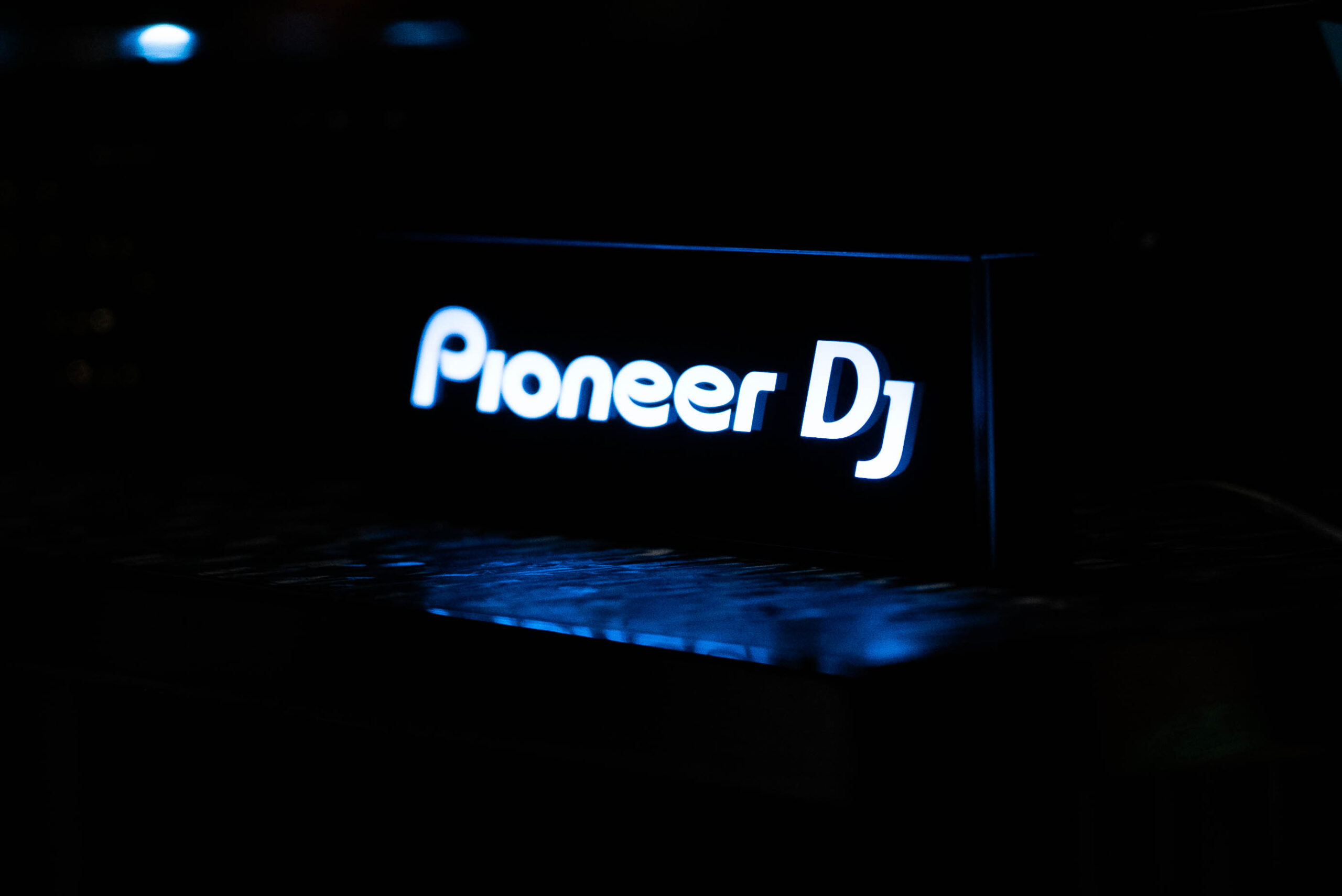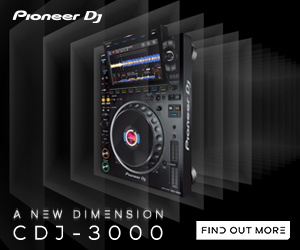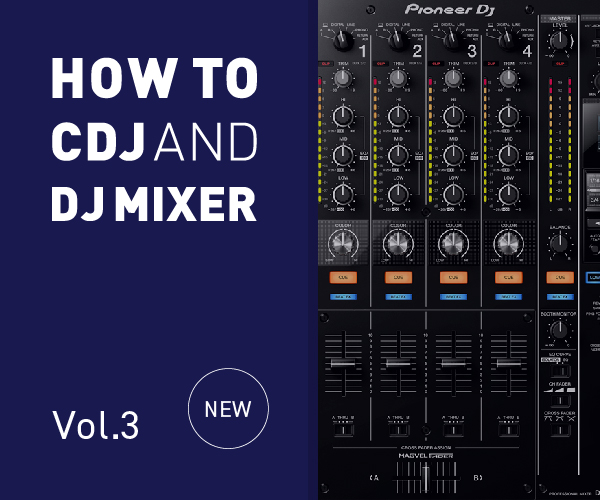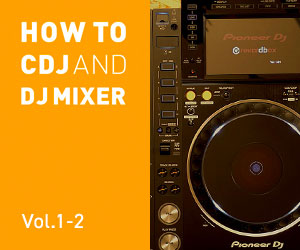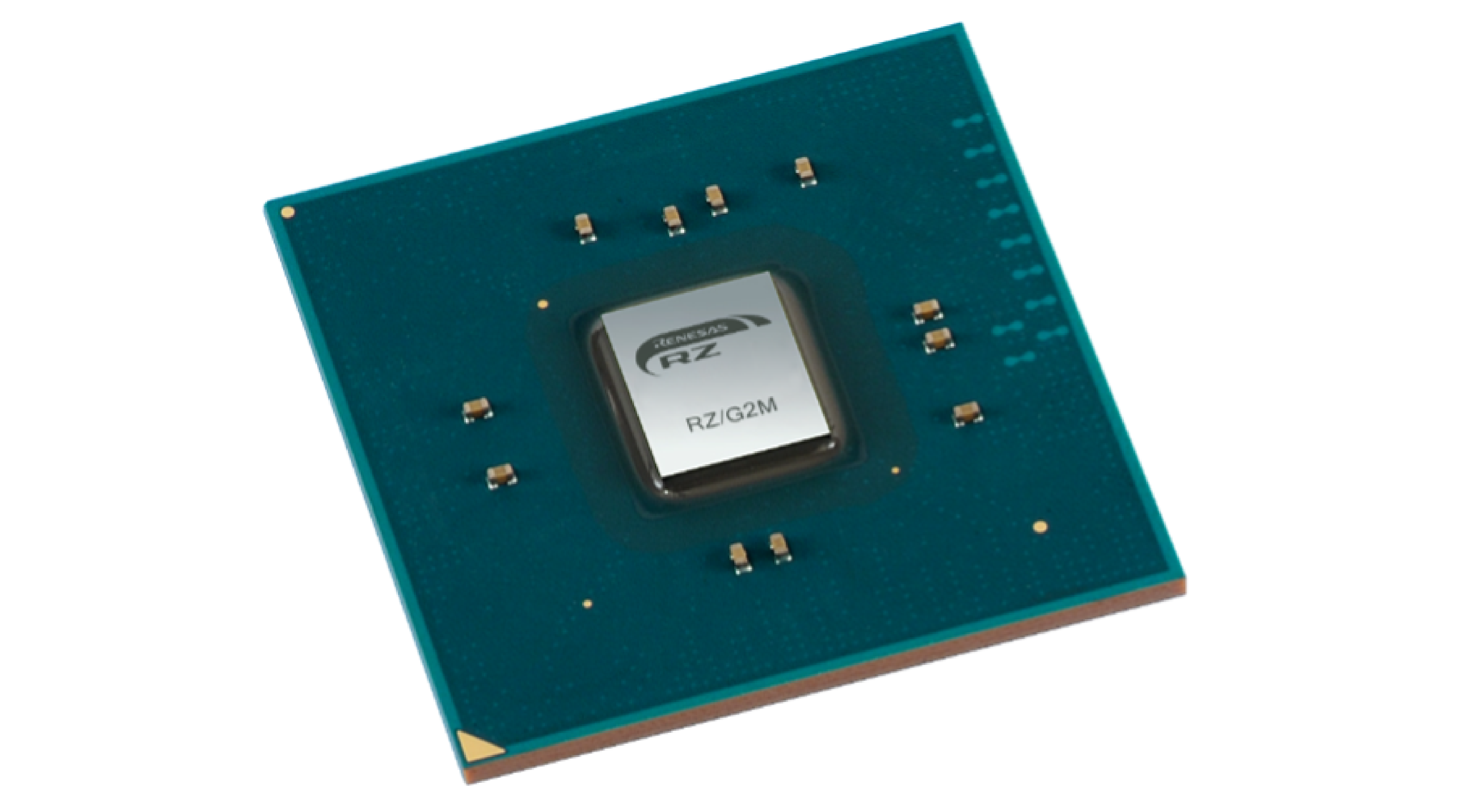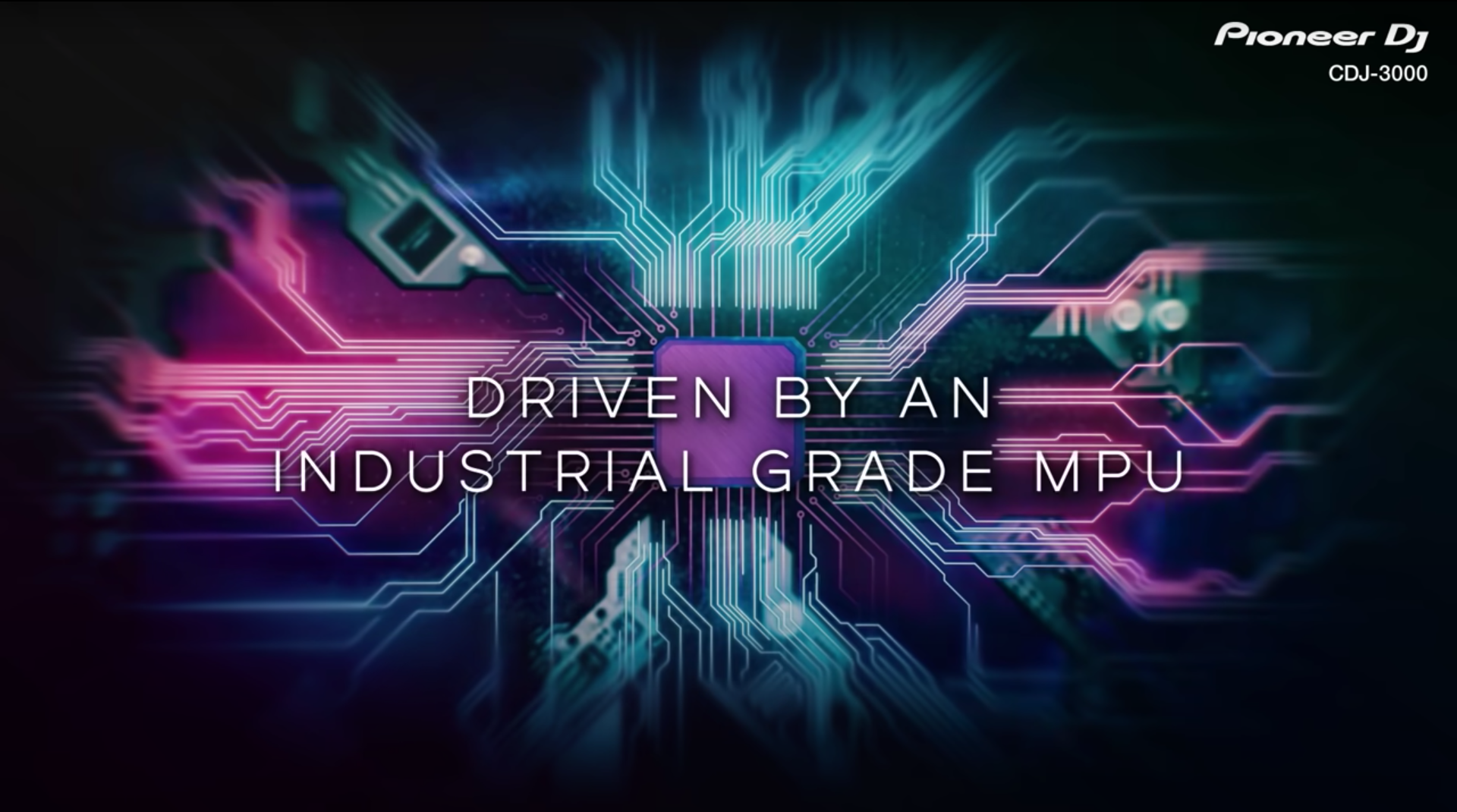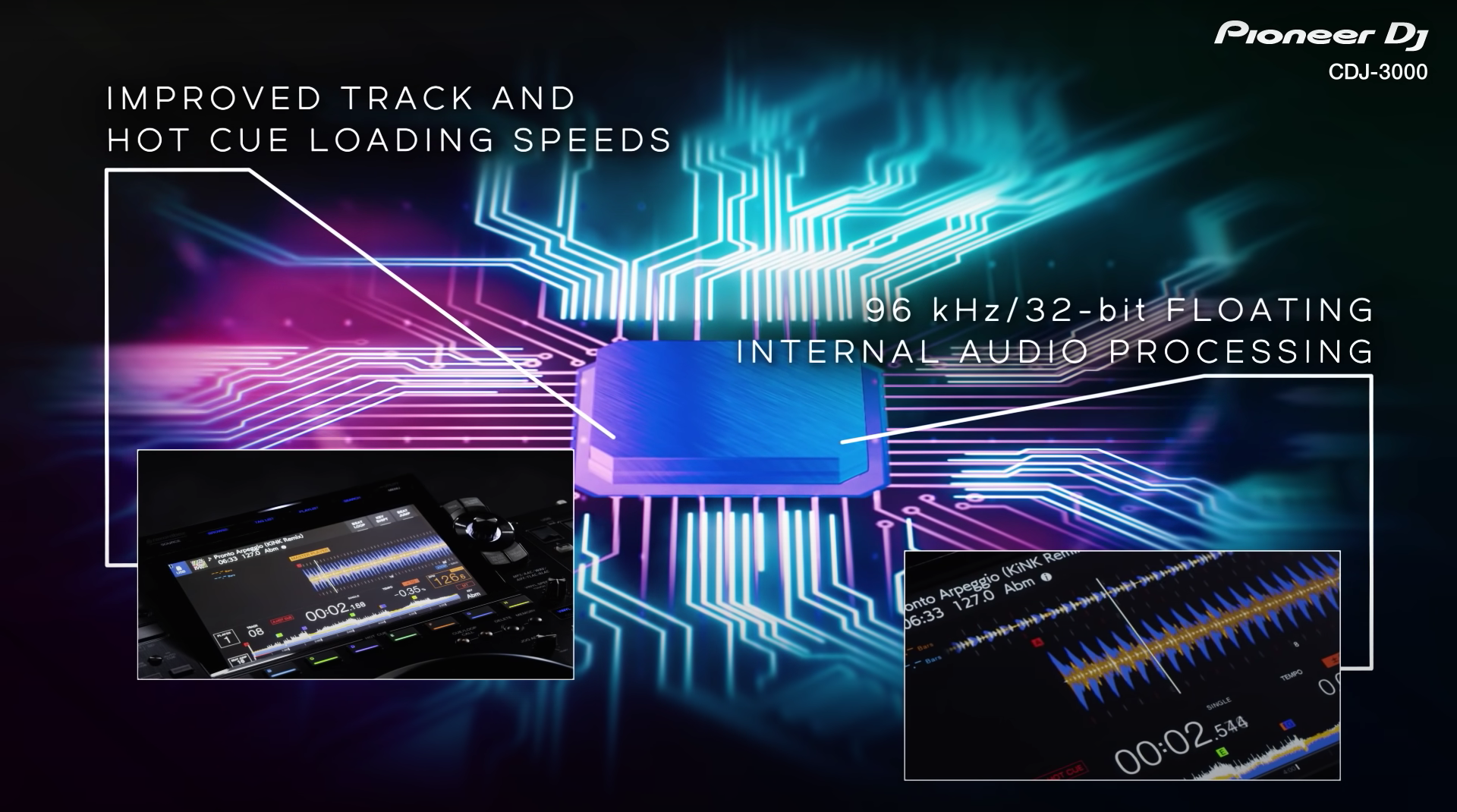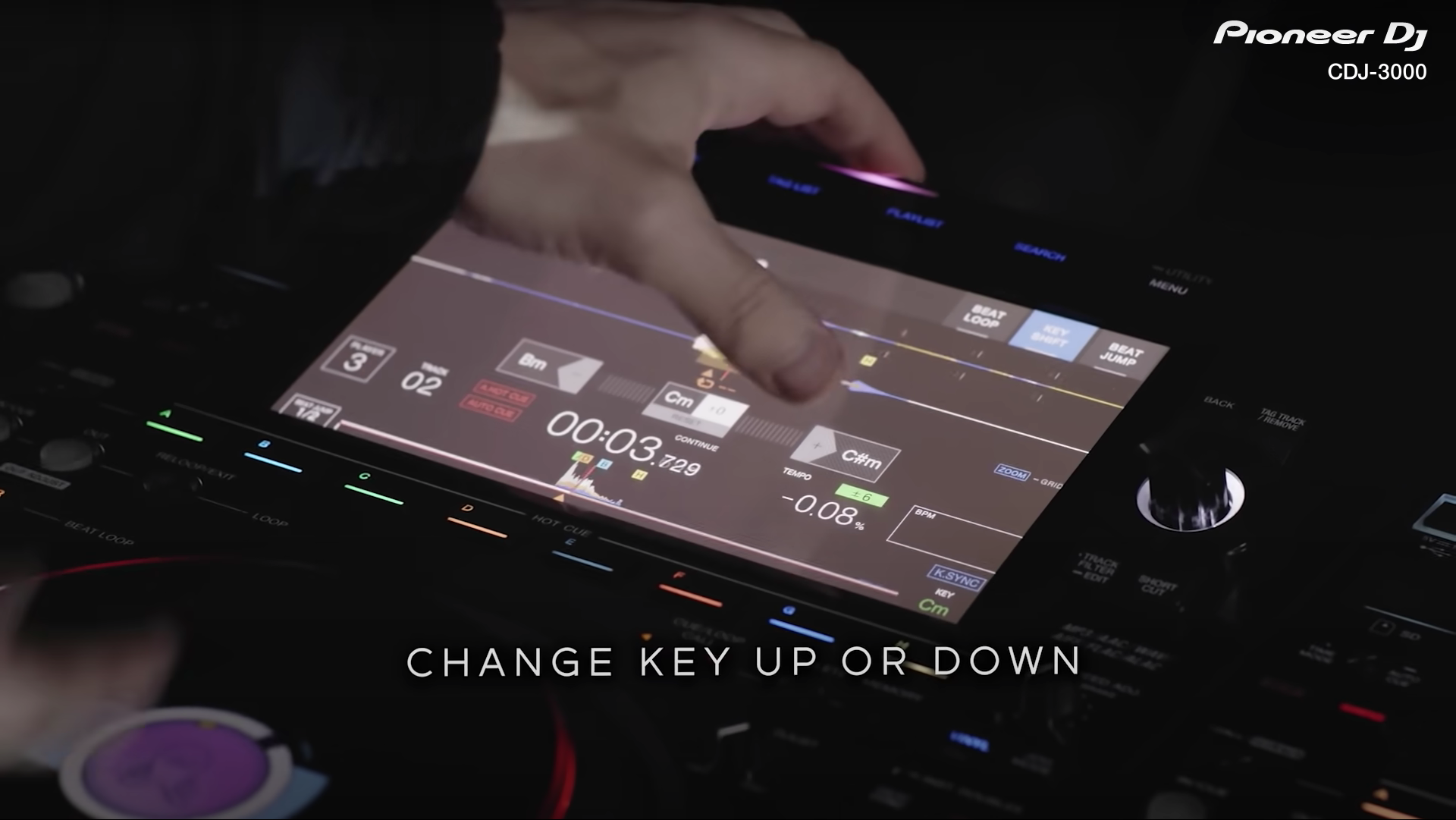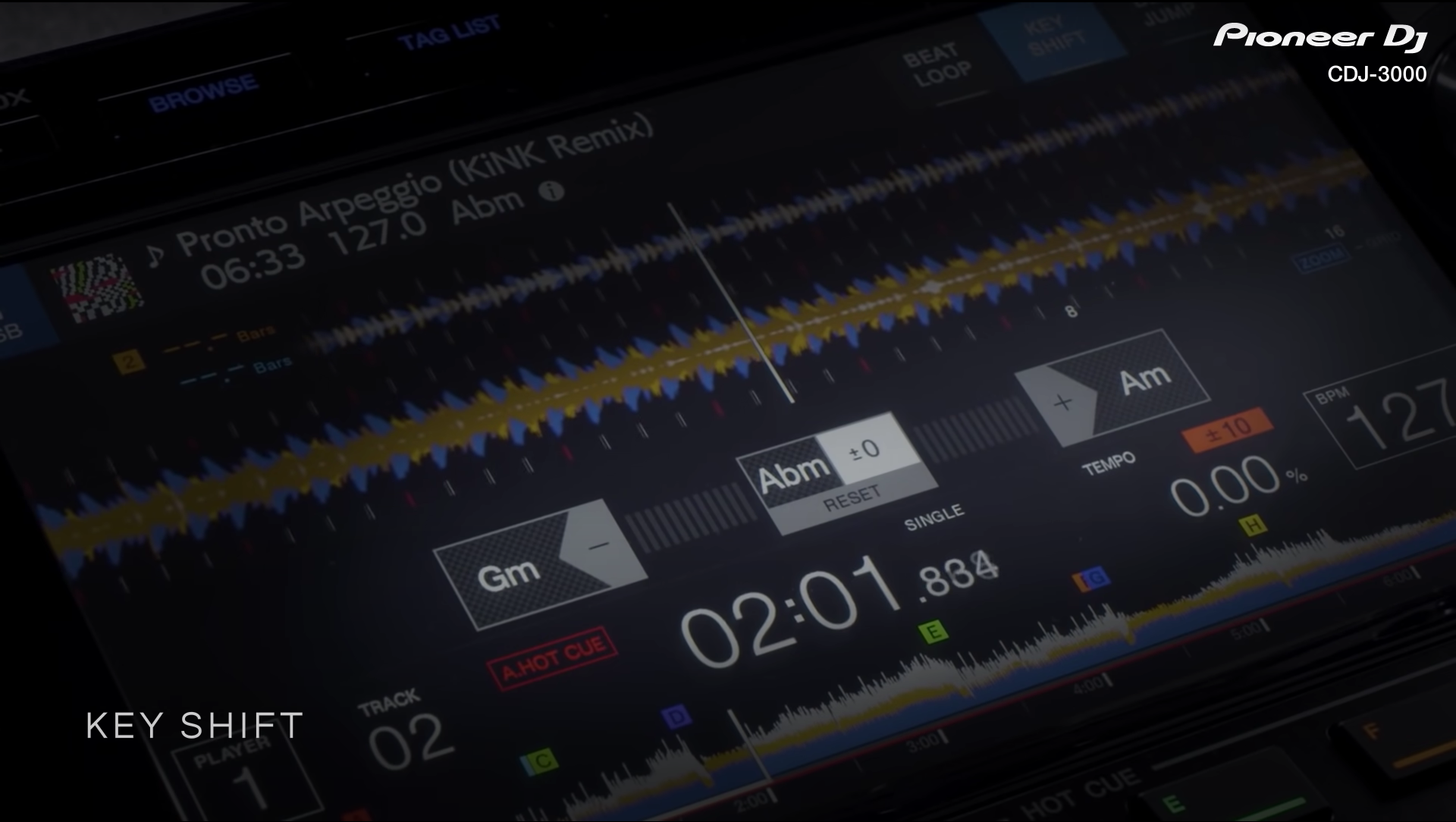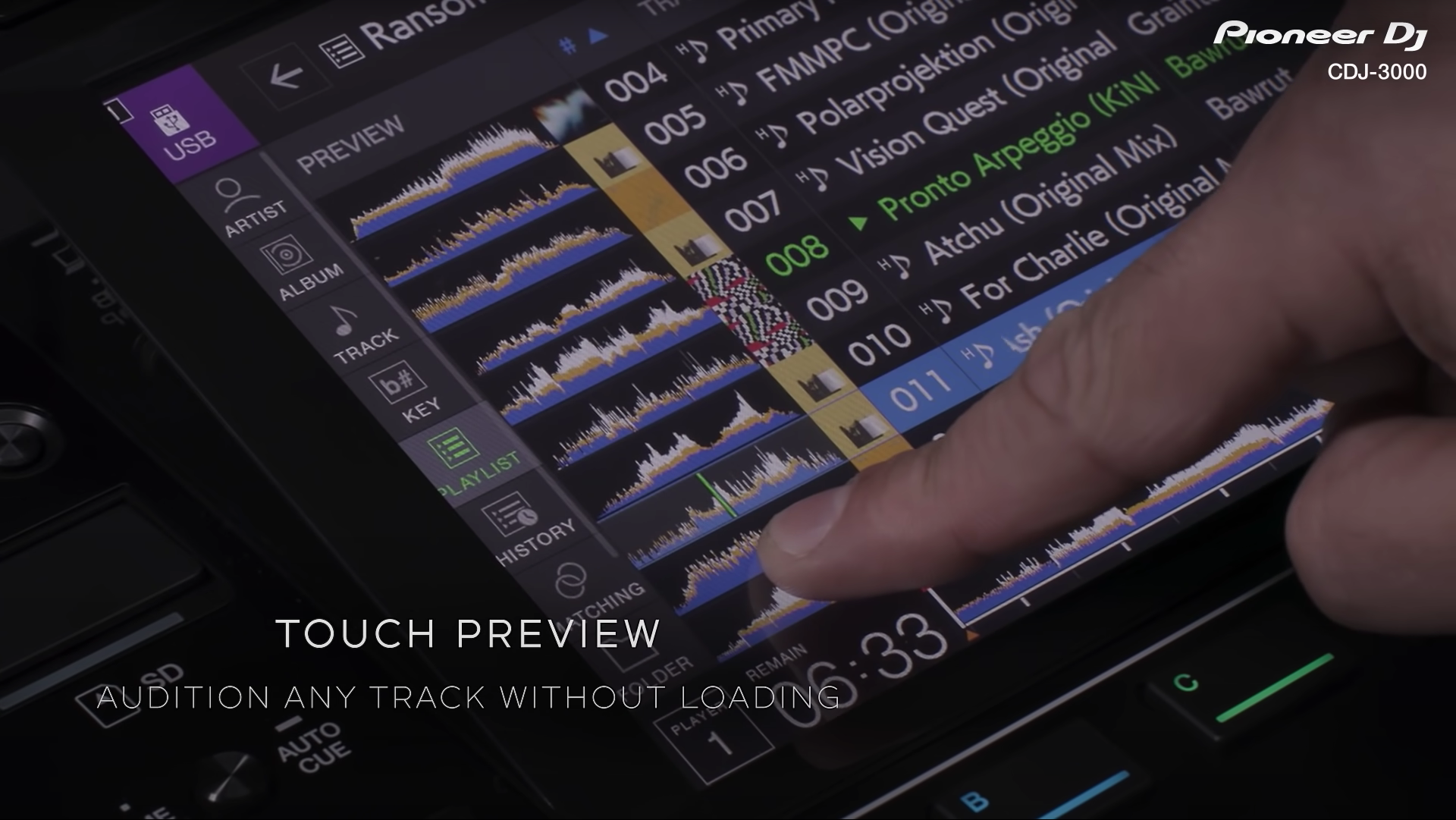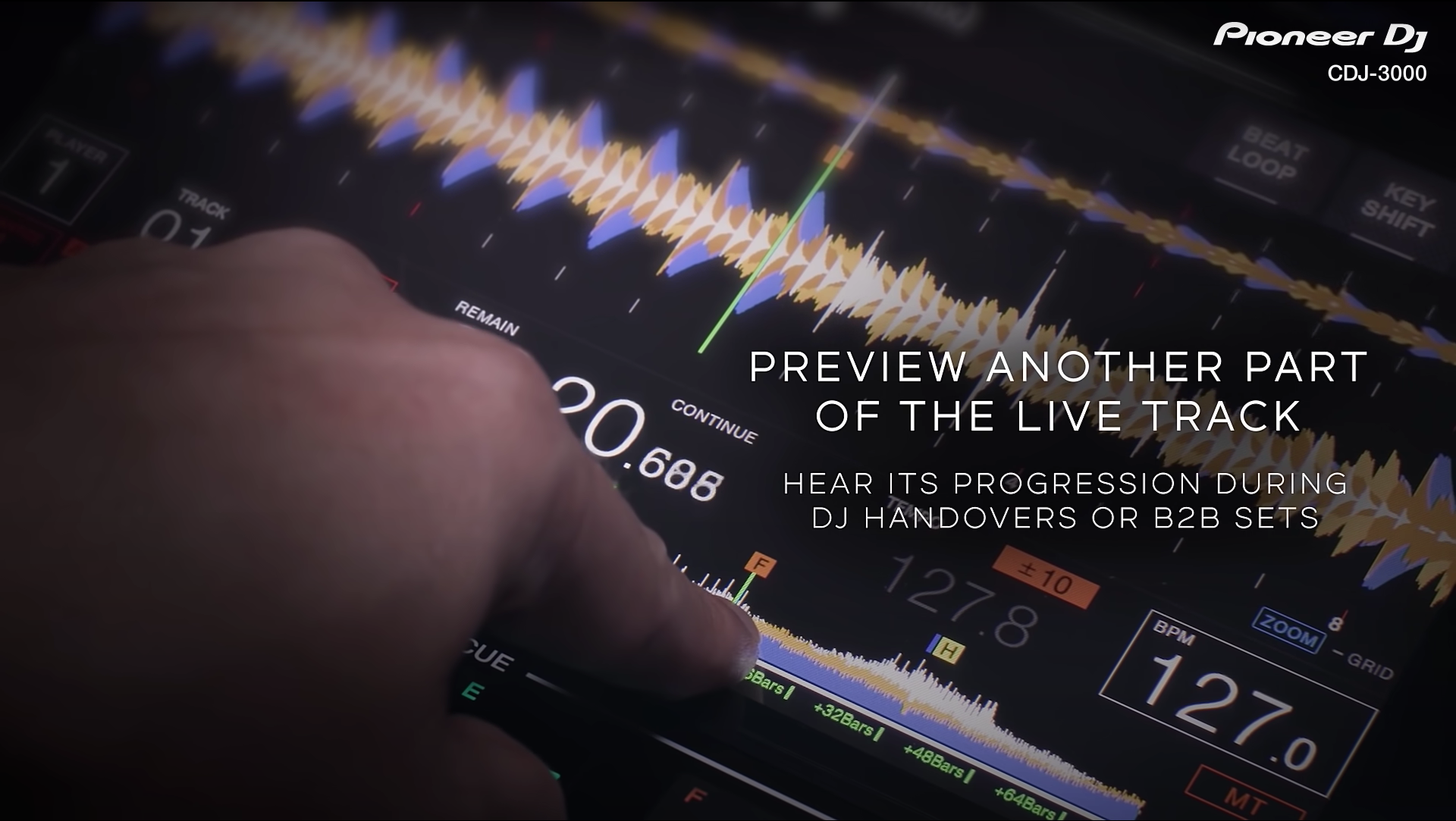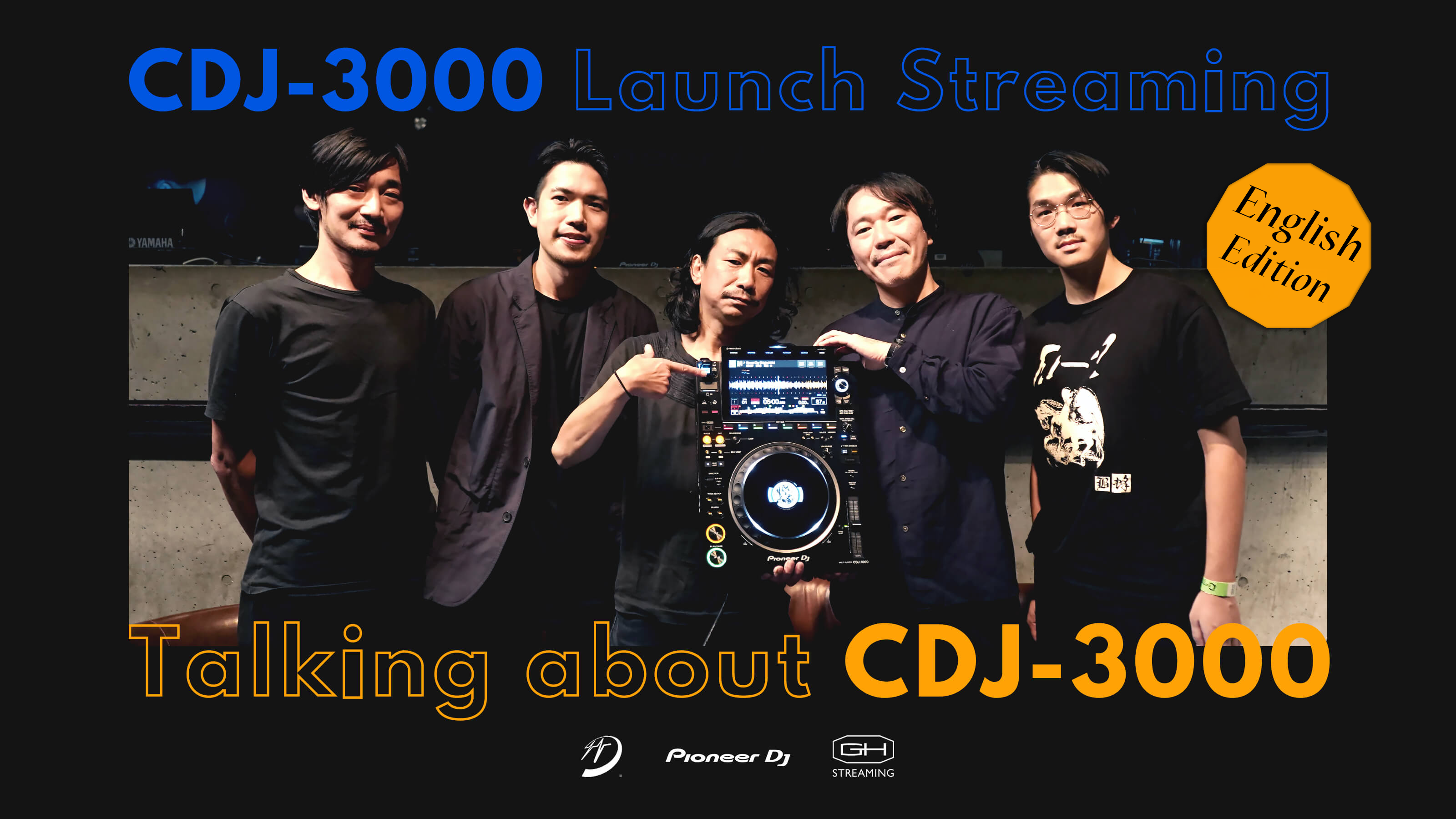
Highlight
“Talking about CDJ-3000” // cut from Pioneer DJ CDJ-3000 Launch Streaming
- 2020.10.30 (Fri) @ Contact Tokyo // streamed on GH Streaming
Text & Interview : Hiromi MatsubaraPhoto : Noriaki Tomomitsu
2021.6.16
October 30th 2020, “GH Streaming” was brought to the world from Japan’s one of the leading venues located in Shibuya, “Contact”. In that was “Pioneer DJ CDJ-3000 Launch Party”– here in this article, we present to you the deep-dive talk session on CDJ-3000.
As our guest speakers, we have DJ NOBU and Gonno, leading dance music producers / DJs for underground house and techno scenes from Japan to the world. From AlphaTheta Corporation, which owns DJ equipment brand “Pioneer DJ”, Mr. Yuji Murai and Mr. Takashi Koga are with us today – who oversaw CDJ-3000 product planning and development.
CDJ-3000 was released on September 2020, right in the middle of the global COVID-19 pandemic with significantly reduced opportunities for DJ performances and parties. As many venues have had to hesitate updating their DJ equipment under financially challenging situations, the latest setup has yet to be widespread, or be experienced by many domestic DJs.
Through this talk session, we wish to convey how CDJ-3000 is to be entitled as “the Next Generation Flagship Multi Player”. Furthermore, we wish you may discover the humble attitude of “Pioneer DJ” who has continued to drive the music scenes while challenging the new dimensions, and you may witness the possibilities of DJ performances enhanced by a CDJ without a CD slot, demonstrated by the two top-players.
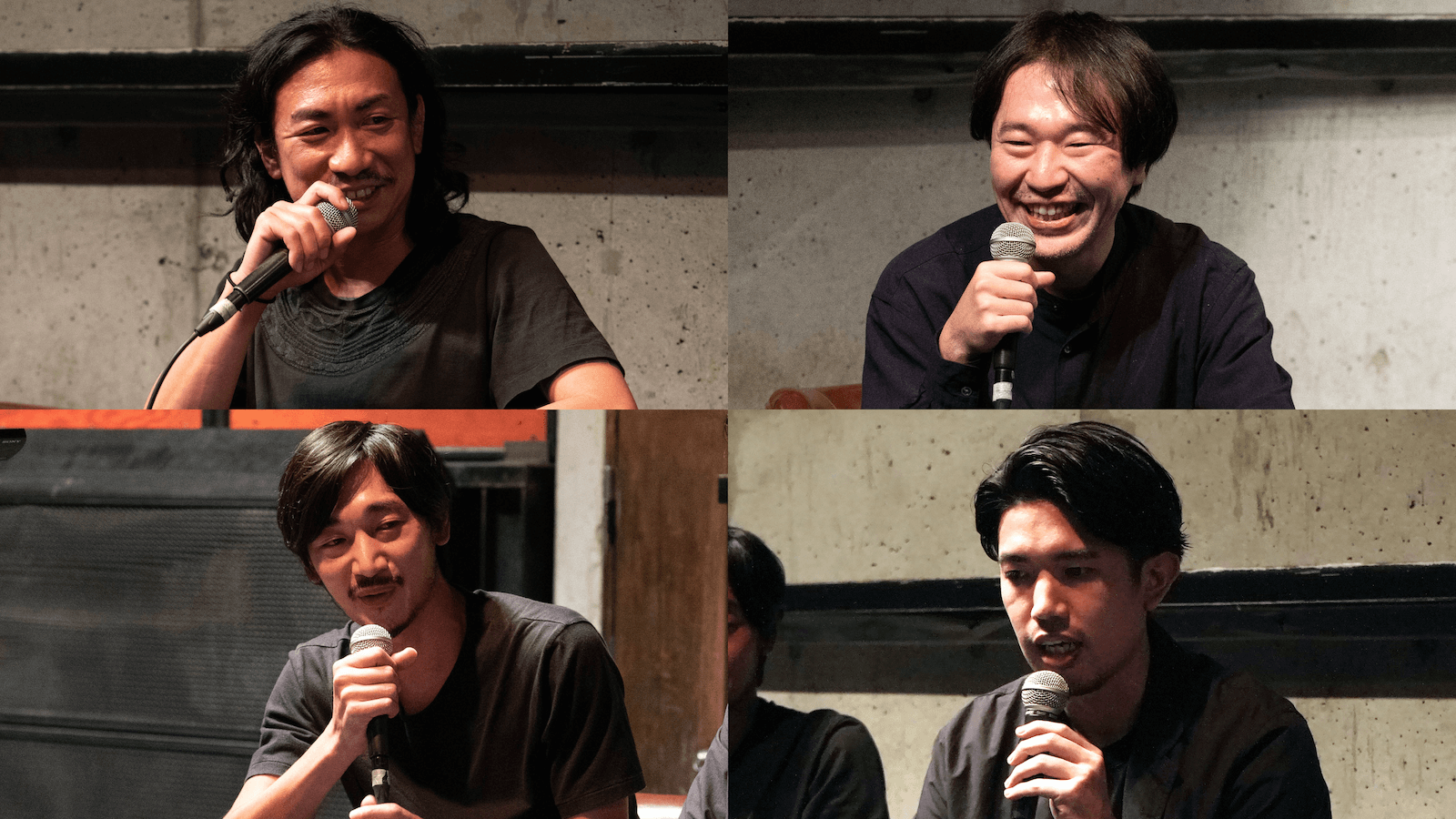
(from the top left) DJ NOBU, Gonno
(from the bottom left) Yuji Murai, Takashi Koga (*both from Business planning management department, Business planning department, Product planning section Ⅰ)
Let’s dive right in. Which parts of CDJ-3000 are refined from CDJ-2000NXS2, precisely?
Koga: First, we newly equipped a high resolution 9-inch display on CDJ-3000 from a 7-inch one on CDJ-2000NXS2. The hardware has also been evolved: Hot Cue buttons have doubled into 8, and Beat Jump buttons have been newly introduced. In terms of reliability to support those features, Cue / Hot Cue buttons are durable ever than before, making them even less likely to be damaged. And finally, we adopted the brand new MPU as a software to be the foundation for all; enables rapid loading and our new features (Link Cue Preview, Key Sync).
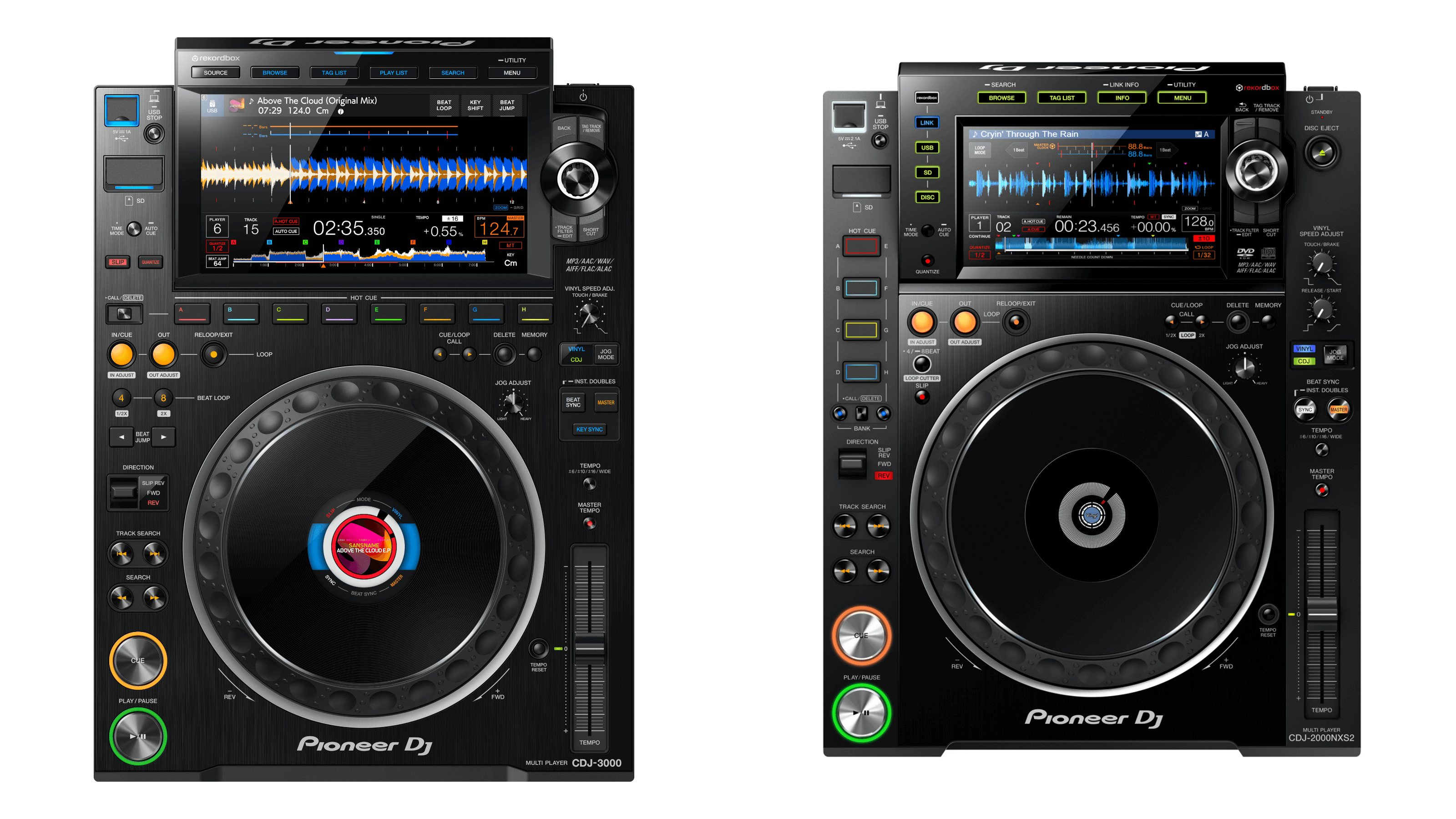
Thank you. Let’s go through each feature in order. First, you can now do so much more with this CDJ boosted by the newly equipped MPU, alongside with detaching a CD drive. Apparently, the sound quality has massively enhanced because of that; what exactly has changed?
Murai: In CDJ-2000NXS2, the audio processing was carried out without changing a sampling rate for 44.1khz 16bit sound sources. But in CDJ-3000, we have developed a new system to perform an advanced audio processing, while keeping a high resolution for any original audio format, called “floating point operation” for 96khz 32bit. This enables us to integrate intended expressions in original tracks, and performances by DJs who use CDJ as an instrument. In other words, it realizes the collaboration of artists’ and DJs’ expressions through the sound.
From official introduction “A New Dimension – Pioneer DJ Official Introduction: CDJ-3000 Professional DJ multi player”
For DJ NOBU and Gonno, while you were prepping for “Pioneer DJ CDJ-3000 Launch Streaming”, what was your impression about its advanced sound quality from CDJ-2000NXS2?
DJ NOBU: This evolution is impressive: the reduced noise level and enhanced resolution from CDJ-2000NXS2, the new features tailor sound sources (like Key Sync) powered by removing a disk drive. Still there are people out there performing with CDs, and personally I would recommend them to take this opportunity and shift to digital formats, perform more creatively with rekordbox.
Gonno: I practiced in Pioneer DJ’s studio for the streaming set, and then I compared CDJ-3000 and CDJ-2000NXS2 head to head- the differences were huge. With the refined resolution, CDJ-3000 sounded much more dynamic even when volumes were the exact same on each [CDJ’s] Level Meter. I assume high-res made sounds richer, but anyways, I got the impression that the sound quality was improved by far.
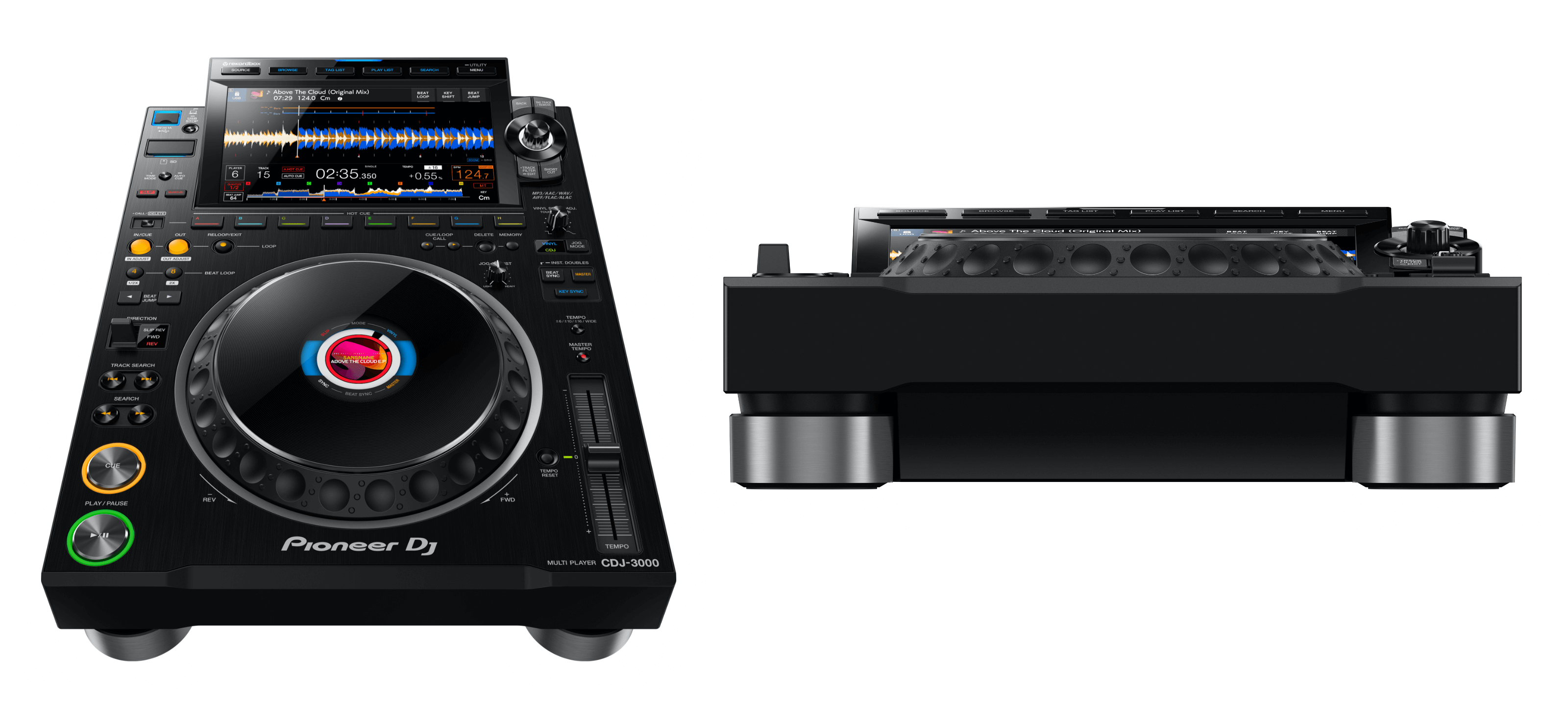
For this streaming, NOBU and Gonno also tried out the brand new 6-channel mixer DJM-V10, which has very respectable sound quality too. I know it’s a bit tricky question since “whether a sound quality is good or bad” depends on one’s preference, but how do you deal with this vague concept of “a good sound quality” and work on its improvement as Pioneer DJ brand?
Murai: Sound quality is such a profound concept which I can talk about for hours, but there’s no such thing as “the agreed-upon ideal sound for everyone” when each person has their own preference. Here, what we’ve been trying as a company is “to make people happy through music”. For that, what we value the most is to deliver passion of music producers, and those of DJs (who express and perform with DJ equipment as their instruments) to the audience. The spirit of sound making in Pioneer DJ is to connect people through the music, by retaining expressions of original tracks, also by making sure that there won’t be any excess noise added when DJs are performing. On top of that, in clubs, sounds aren’t the only thing that matters. You also want to vibe with sounds while communicating with people around you. So, we are also trying to achieve sounds which won’t be ear-fatiguing even with high volume, with which you can still enjoy having conversations. We have slightly different policies for each product: for CDJs it’s pursuing reproducibility of original sound sources, and for mixers it’s making comfortable sounds for the audience. But at the end of the day, we all come together and agree to do our best to enrich people’s life through music.
DJ NOBU: Now that a great policy.
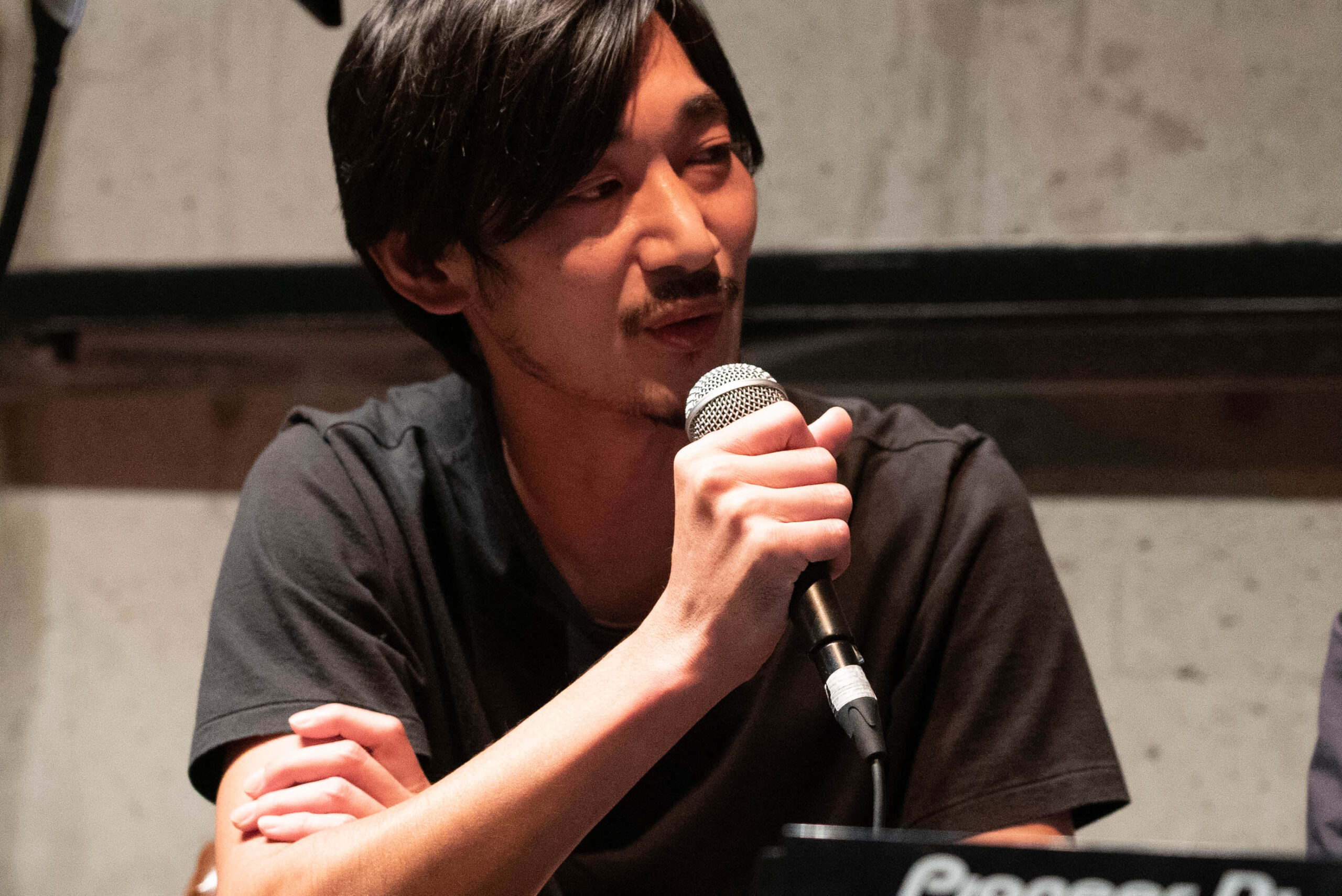
Speaking of sound quality, people often discuss which sound source format[s] you choose for a DJ performance, either compressed MP3, or un-compressed WAV / AIFF. NOBU and Gonno, what format[s] are you using, and why is that?
DJ NOBU: For me, it’s definitely WAV or AIFF. I usually buy AIFF, but when I communicate with other artists / DJs I receive files in WAV. I would never use MP3 personally.
Gonno: I also used to be anti MP3, but as I’ve been researching here and there, I’ve realized sometimes MP3 can still make good sounds, relatively speaking. The point is, whether that sound is good or bad highly depends on its recording, mix and mastering, regardless of a format.
DJ NOBU: Wait, so you use MP3? [laugh]
Gonno: No, I don’t have a single MP3 after all. [laugh] But, I saw a nice DJ performance with MP3 at Panorama Bar before, which surprised me quite a lot. That being said, I continue to use AIFF because MP3 is logically thinned out so I don’t feel much comfortable with that. Plus, I was actually returning to vinyl for about 80% of my DJ sets, right until CDJ-3000’s release. But now I’m excited for the future with the high-quality audio processing CDJ-3000.
Gonno, when we talked personally the other day, I remember you mentioned about the difference between data formats and a vinyl over audiences’ staying rates/times on a dance floor. Could you tell us that once again?
Gonno: One night in a club, I did a mini-experiment: playing the same song with a vinyl, with AIFF that I ripped from that vinyl, and with another AIFF that I bought from Bandcamp. For audiences’ staying rates, ripped AIFF was least, then AIFF bought online came next, and vinyl was overwhelmingly the best performance by more than 3-minute. While vinyl doesn’t accurately reproduce the original sounds logically speaking, but I believe it has some sort of special bandwidths, frequencies, or harmonic sounds that can attract people. Just as Murai was mentioning before, we [DJs] often change sound balances with a mixer, and now I’m aware that reproducing the original sounds doesn’t necessarily lead to audiences’ longer staying time [on a dance floor].
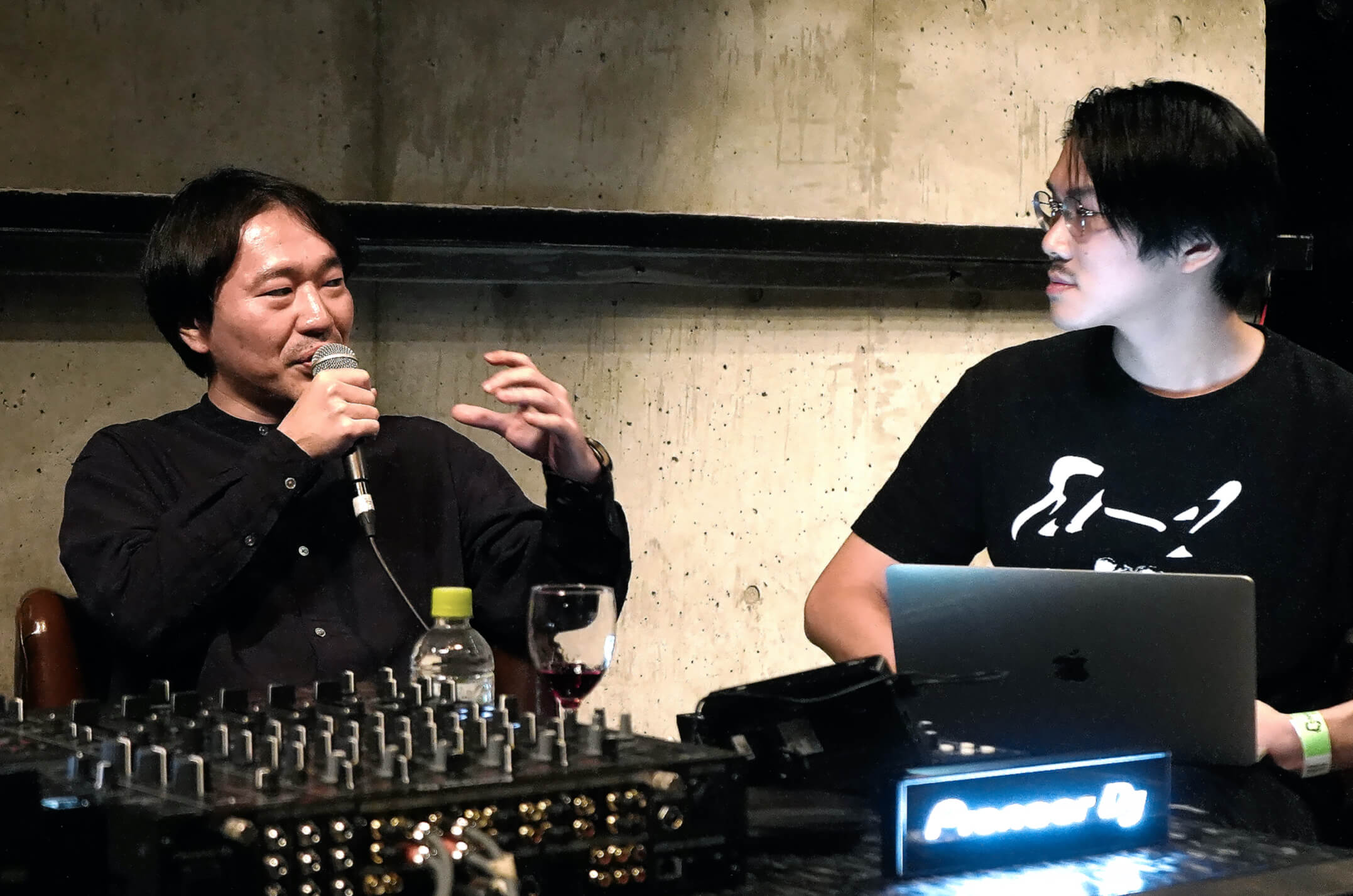
Right: A host of the talk session, Hiromi Matsubara (Romy Mats)
Let’s carry on another topic on CDJ and vinyl. With vinyl, an interval goes up and down as you change a pitch, but there was a function to fix the original key while changing your pitch; called Master Tempo in previous CDJs until CDJ-2000NXS2. And now we have Key Sync, a further function to control your keys, added on CDJ-3000 thanks to the new MPU. This allows you to automatically and instantly match up compatible keys on non-Master CDJ to a loaded track on Master CDJ. What was your vision for this function’s development?
Koga: While it has always been a trend to harmonically mix tracks based on the keys, there’s been a challenge for us – since you could only play tracks in original keys until CDJ-2000NXS2, track selections had to be limited. That’s why we developed and installed Key Sync- “to be able to mix harmonically with various tracks ” being our vision. As we developed this function, we refined our algorism too. We used to see some patterns where you try to synchronize all the keys, a key jumps by ±6 half-tones, ended up destroying the scale. However, CDJ-3000 is designed with an algorism to synchronize tracks with maximum ±2 half-tones variations: allowing you to play diverse tracks within the scale.
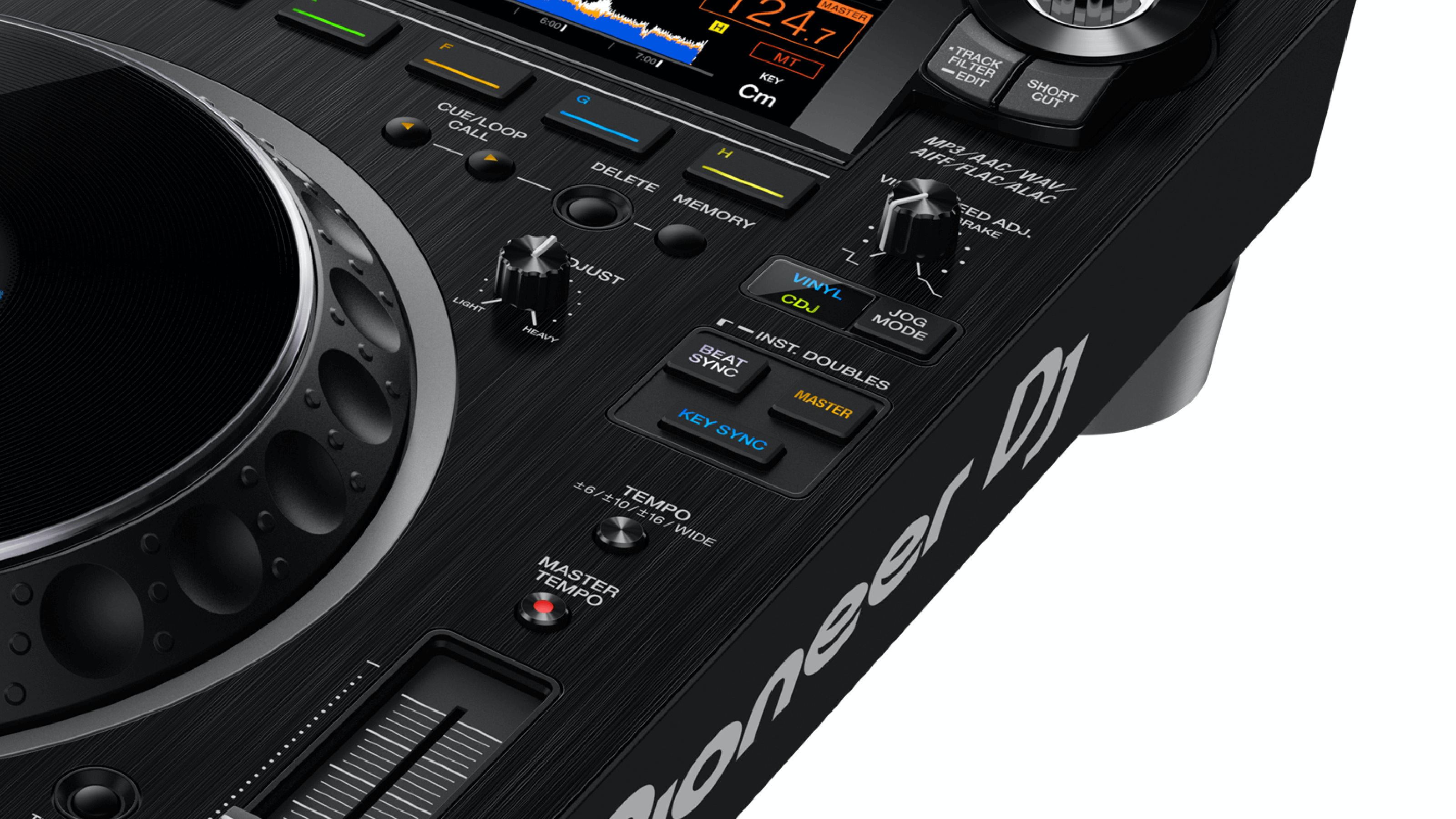
Gonno, you were using this Key Sync during the streaming set. How did you feel about its usability?
Gonno: I tried it couple of times. Key Sync is a fascinating function of course, and what’s more is that it will make people pay more attention to the keys. I think it’ll be amazing if people can notice compatible keys and start trying key mixing, even when they are not using this Key Sync. Still, shifting keys by 2 didn’t sound too natural to me, but shift by 1 worked totally fine.
NOBU and Gonno, to what extent do you pay attention for “key mixing” when you perform?
DJ NOBU: hmm, it depends. When I play harmonic tracks, or at particular venues, I’d be very careful about keys, but sometimes there are more important things than keys; in raves, for example. But generally, it’s always better to enjoy tracks without discords, right? With Key Sync, you won’t have discords anymore. Meanwhile I feel like key changes by more than 1 can lose an original track’s character as it is. Anyways, I do believe this function will be useful. For instance, it’ll be fun to use Key Sync to ambient tracks, etc.
Gonno: For repetitive tracks with a single note, without much harmonic progressions going on, it’ll be much more satisfying to layer sounds if keys are matching.
DJ NOBU: It’ll be much easier to make layers, right?
Gonno: I agree. I’m sure well-adjusted keys will allow you to mix well with either 3-channel or even with 4-channel.
Just for the record, keys won’t be displayed if tracks haven’t been analyzed on rekordbox beforehand. One thing I’ve noticed while giving lectures on rekordbox to DJs, is that surprisingly many of them aren’t analyzing keys. I usually pay attention to do key mixing as a DJ myself, so I often wonder why some people decide not to analyze keys.
Gonno: House tracks I play often have melodies, which is easier to build a story in your performance by using keys well. However, there are many other genres where keys don’t play as much important roles, and DJs who play those genres are just not focusing on keys too much, which I totally think is fine. But I still believe you’ll have more possibilities for your performance by being aware of the tonality of keys. On top, you can just ignore or unlock analyzed keys during your set if you want.
DJ NOBU: If you wish to hook on people with your harmonic performance, like Gonno and myself, it’s a very good idea to analyze your keys in advance or to use Key Sync. While it’s still important to listen with your own ears, I discovered many new things while trying out Key Sync during this CDJ-3000 set. I believe Key Sync made it easier to match your keys, and it expended our creativities.
Gonno: Kind of techno tracks you play often don’t have much harmonic progressions, so if keys are matching for each phrase, I imagine it’ll be so satisfying.
DJ NOBU: That’ll feel way better.
Gonno: You do sometimes find unique sounds like discords when keys aren’t synchronized, but it’s difficult to intentionally make one right in your set, and on top, discords can be uncomfortable while mixing for the most part.
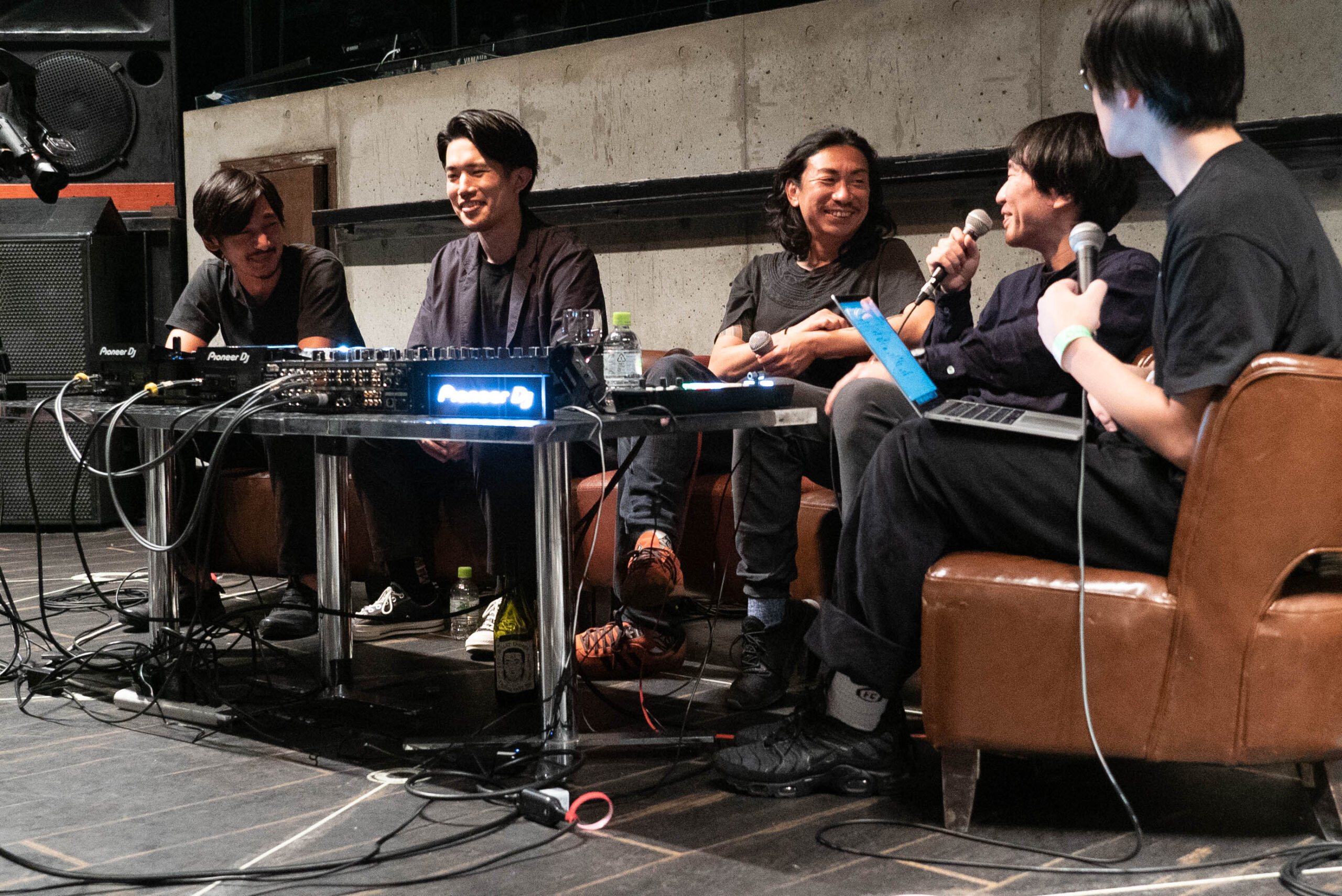
And then, CDJ-3000 has another function for keys: Key Shift. What is this capable of?
Koga: Key Shift allows DJs to manually change keys. When you touch “Key Shift” button on the top-right of the screen, you’ll see GUI under the waveform. Simply tap the right side to turn up the keys by half-tone, and likewise tap the left side to turn down the keys by half-tone. Now tap the middle part and you can reset to the original key. This function is perfect if you wish to perform a modulation during your set, or in a build-up performance for EDM DJs.
From official introduction “A New Dimension – Pioneer DJ Official Introduction: CDJ-3000 Professional DJ multi player”
As you mentioned now, Key Shift was adopted with demands and suggestions from EDM DJs, who tend to incorporate various performances in their sets?
Koga: As for the background of this function, we wanted a way to manually control a harmonic mixing on top of automatic key adjustments by Key Sync. Also, as you referred to, we also wanted to realize more captivating performances with aggressive dance music, by emphasizing a build-up for example.
Gonno: Like using this function almost as an effect to change scales.
Murai: Ever since DJ itself started with turntables, you could change tempos of music, as a mean to modify someone else’s track into your own musical expression. But now, armed with a new function to “change your keys”, we are hoping more and more creative performance styles will emerge beyond our imagination.
Gonno: Right, surely there will be new styles with a function like this. Just like we used to mix by matching tempos, and then some DJs started to mix tracks with matched keys, I’m sure more new expressions will show up fueled with new technologies.
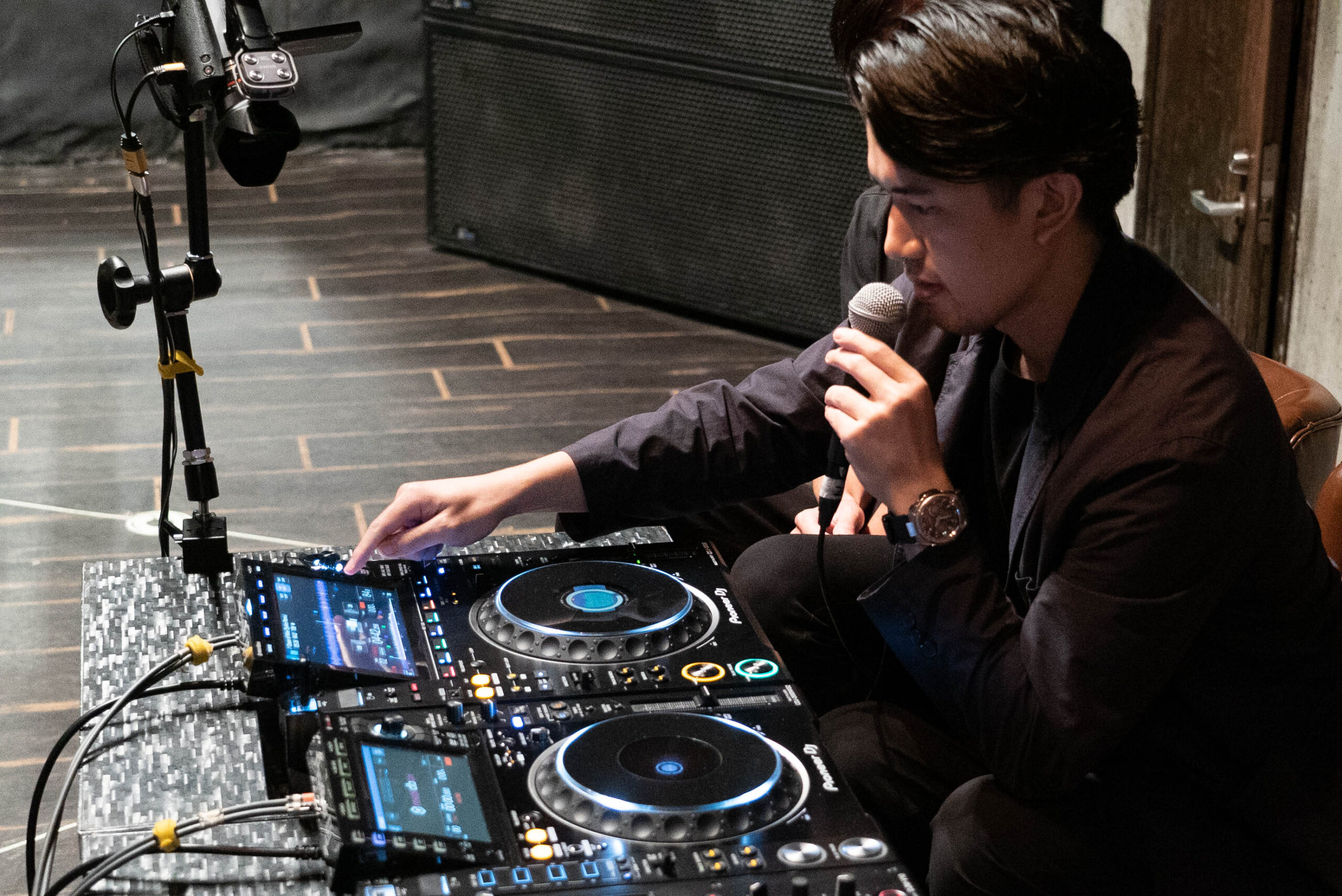
In that sense, I was personally shocked with Link Cue Preview, another new function on CDJ-3000. Maybe a bit too early to say it’ll change [DJing] styles, but I believe DJs performance routines will be refined once again if you master using this function efficiently. Koga, could you explain what kind of function this is?
Koga: CDJ-3000 has two previews for your tracks. First, we have Touch Preview on the browser screen (where you select your tracks). When you browse through your library on CDJ-3000, you have a small waveform on the left side of the screen for each track, and as you touch it, you can monitor that part of the waveform, in addition to a live track on a Master CDJ. This allows you to check what kind of track it is without even loading it. And secondly, you can preview another part of a live track, by touching a waveform on the bottom of your screen after it’s loaded. We adopted this function reflecting a recent trend of B2B style performances in festivals, and the increase of B2B units. For instance, if you’re not sure about a progression of a live track your B2B partner is playing, you can quickly check later parts of that in advance, which can help selecting and mixing in your next track.
From official introduction “A New Dimension – Pioneer DJ Official Introduction: CDJ-3000 Professional DJ multi player”
As of now (October 2020), to use Link Cue Preview, your DJ mixer must be updated to the latest version of either DJM-900NXS2 or DJM-V10, but it is highly useful, regardless. By the way, did you already have the vision of Link Cue Preview more than four years ago, considering that there is a “Link Cue” button on DJM-900NXS2?
Koga: As you guessed, we did. But you couldn’t use [Link Cue function] with USB devises. Until now, you could only use it in “rekordbox Link Export” via connecting rekordbox (PC/Mac) to CDJ or DJM with LAN cable; which wasn’t very widely known. Now that you can use this function with your USB devises for the first time, we are hoping more and more DJs will start using it.
I’ve been introducing/lecturing this Link Cue Preview to many DJs since the release of CDJ 3000, including to NOBU and Gonno, but everyone’s reaction has been amazing. Many are saying “that’s exactly what I’ve wanted”.
DJ NOBU: Seriously, I was like: “I’ve been waiting for this”. I’ve done so many B2B sets just like you mentioned before, and sometimes my partner might play weird tracks. In those cases, this function would be so useful.
Gonno: During B2B sets, it’ll be nice to have this preview for example when your partner plays a track you don’t really know, or a track that pitches down towards the end. If you know the progression of that track, you can boost the accuracy of your mix too.
Guessing from the fact that you can check waveforms on the browser screen, and that you can preview [those waveforms], I’ve the impression that CDJ is getting closer toward rekordbox or PC, at the same time it evolved from CDJ-2000NXS2. What is your actual intention for that?
Koga: Right, as a principle we try to make it closer to rekordbox in terms of the browser screens. For previews, we take into consideration that now everyone has enormous number of tracks with easier access digital music files, also a trend that play time of each track is getting shorter and shorter in a set for video medias such as YouTube or Instagram. We implemented our browser preview considering how those DJs can load a next track as quickly as possible.
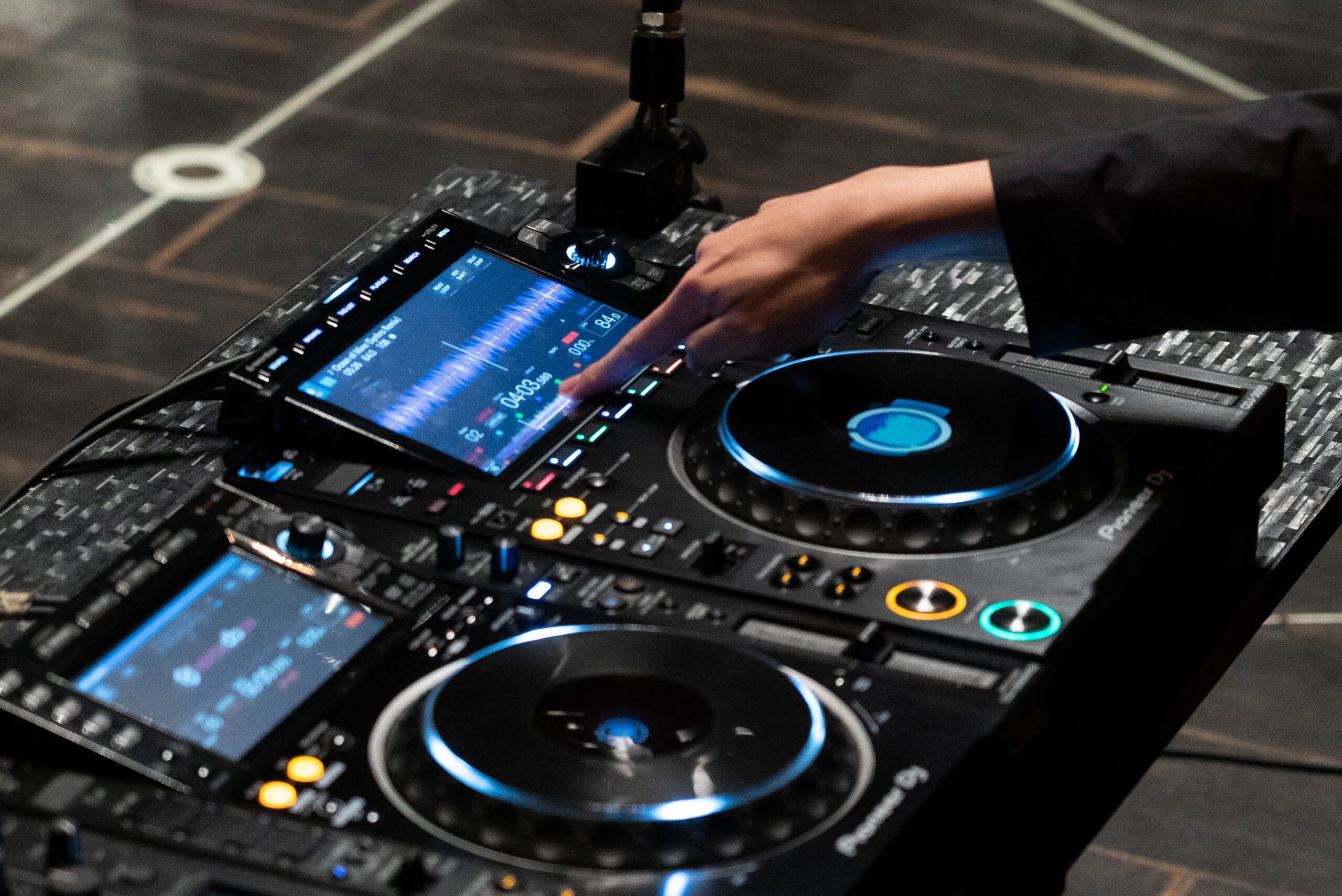
And Hot Cues are another thing DJs with quick mixing styles use very often, which also advanced by far in CDJ-3000. While you only had 4 buttons on the left side of the display (switching between A-D and E-H of 8 total Hot Cues) until CDJ-2000NXS2, but now on CDJ-3000, there are 8 buttons from A-H under the display. I assume you especially reflected DJs feedbacks very well for this change, didn’t you?
Koga: That’s true. For this product, we’ve been considering what kind of changes we can bring into Hot Cues: whether to remain 4 buttons in the same place as before, or to add more of them. After hearing DJs feedbacks, we came to realize there are more and more DJs using more than 4 Hot Cues in their performances. In that case, our conventional way to switch over 4 buttons might fall short, so we incorporated 8 Hot Cues on CDJ-3000 for DJs to be able to more directly assign and play them. Additionally, we conducted various hearings about button layouts. Our DJ controller models have their Hot Cues under the jog wheels, but for a professional/industrial equipment like this, we arranged Hot Cues under the display. CDJs can be placed in many ways like in a darker place or on a stand, so it’s no good for us nor for DJs if those conditions cause Hot Cues malfunction. And we hope this change also made it easier to grasp which Hot Cue is assigned for which part of a waveform, as a waveform on the display and Hot Cues are now parallel.
NOBU, this time you performed with plenty of Hot Cue Loops, which you set a loop beforehand and memory that in a Hot Cue. Including your preps, how was the usability of new Hot Cues?
DJ NOBU: They’re very accurate, and their sensibility is also great. Since this was an important streaming, I meticulously prepared with rekordbox, then I used those pre-set Hot Cues while adjusting with a jog before turning up a fader. Personally, I don’t really pick tracks with lots of progressions, but still each track has several catchy parts. So, I set loops in a way those parts sound even better and assigned them on Hot Cues. I’ve also always perceived CDJs as “great samplers”, and using Hot Cues let you mix more creatively in that sense. As Gonno was mentioning, I too feel bad for producers for original tracks sometimes, but surely you now have more possibilities by using great segments of tracks more as parts, and indeed it’s such a useful function so I’ll continue using this.
Gonno: Definitely. It can be a starting point for your creativity.
Murai: Conventionally, scratching DJs used to put a sticker on a vinyl label so that they could immediately set a stylus for their scratch point. When we first introduced CDJ-1000, our very first scratch-able product, we tried to achieve the same thing on a digital format- and that was the origin of Hot Cues. Now after two decades since then, more and more people are using Hot Cues in diverse ways. Take an example- you download a digital music file, analyze it on rekordbox, and get its BPM. If you jump from the first beat by 16 beats or by several bars using Beat Jump, and mark key positions onto your Hot Cues, you can effectively understand your tracks without even listening to the whole. What we hope is, even when you’re getting good amount of tracks every day and don’t have enough time to listen to them all, effectively leaving Hot Cues with rekordbox will let you fully utilize your tracks as your strength.
Koga: And before, most DJs were setting cue on a Cue button and using a Play button to play a track, and as NOBU said Hot Cues were functioning more as samplers. Now, however, many (especially younger) DJs are using Hot Cues to cue and to play a track, as in that way you can start your track from the exact position you’ve set.
Indeed, we now see more people using Hot Cues instead of a Cue button and a Play button.
Murai: This CDJ also has a quantize function which allows a track to start matching perfectly to the live track’s beat, even when you press Hot Cues quite roughly- that can be another reason for this shift.
DJ NOBU: Quantize functions on CDJs are getting better and better, really.
Gonno: And, now we can set even finer beats to quantize in the setting, can’t we?
Koga: Yes, you can set from 1 beat up to 1/8 beat.
Gonno: For example, if you set a Hot Cue in an appropriate position in a about 3-munite short track, and if you set the quantize well, you can repeatedly come back to that cued position and make your own instant extended-mix, in a way. I really want to try things like that.
Murai: With Hot Cues, you can make short tracks longer, or you can skip to any parts you want in long tracks. You have so much freedom to control a length of your track as you wish.
Gonno: That’s fantastic. You basically can do anything depends how you regard it. I believe diversified DJ styles will emerge from here, in expanded possibilities with new equipment like this.
DJ NOBU: It truly feels like “an equipment of the future”. CDJ-3000 is way easier to use compared to CDJ-2000NXS2, too.
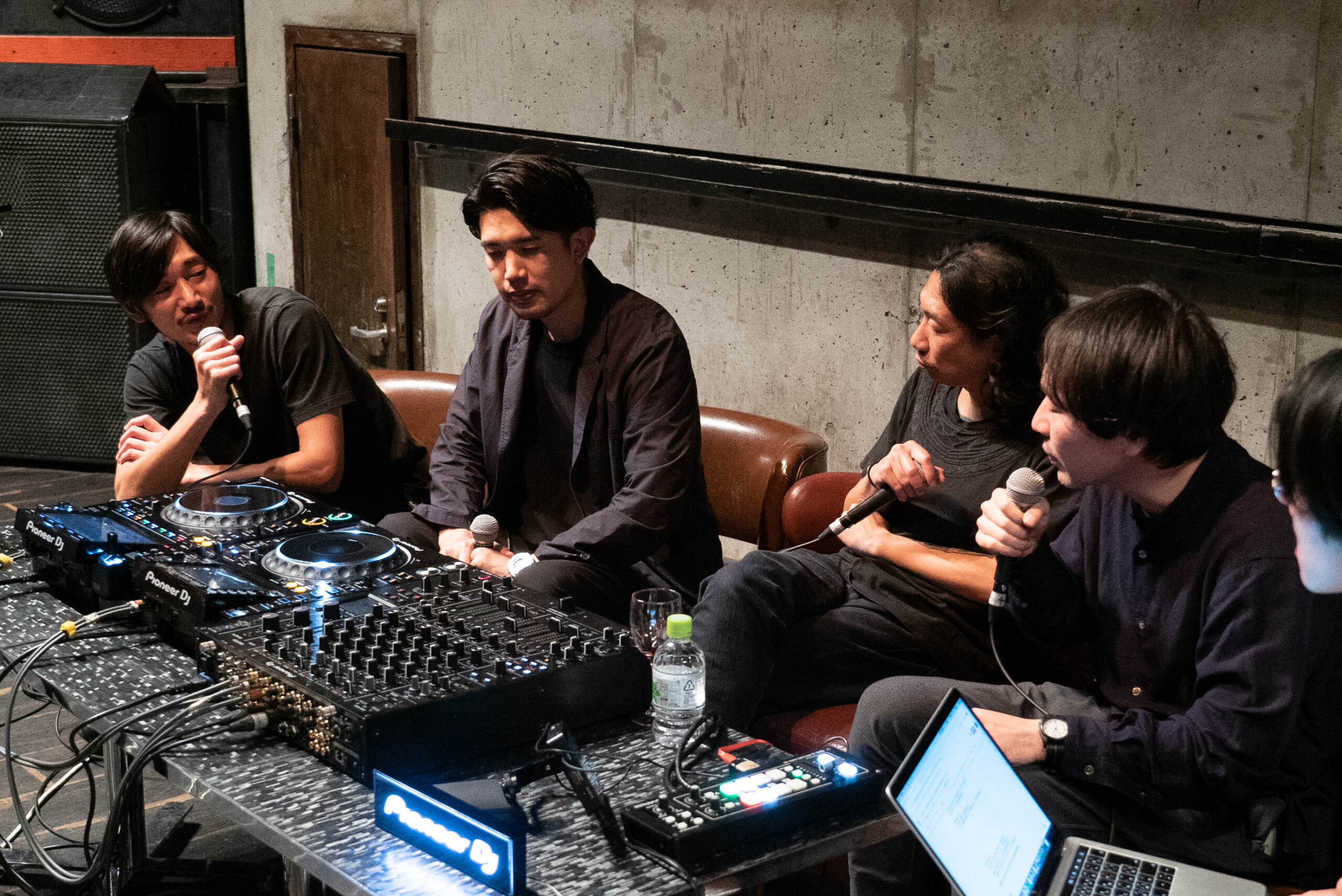
Koga: After all it’s a CDJ, so “reliability” was what we valued the most in the development [of CDJ-3000]. Faster track loading speed or improved durability of each buttons were one of the main concepts as I mentioned in the beginning, and we also had a strong vision to level-up CDJ as one instrument for performance: extending Hot Cue buttons, incorporating Beat Jump as a hardware, and so on. And as a personal project, I worked hard for loop functions. I was aiming to improve loops while hearing opinions from DJs. Particularly, CDJ-3000 adopted various polyrhythmic odd-numbered loops on the Beat Loop second bank, while even-numbered loops have been more commonly used conventionally.
DJ NOBU: I was really impressed by the number of polyrhythm loops when I first saw them.
Koga: I’m glad you liked it. When I visited Berlin, many techno DJs there were passionately asking for more of these. After a while, I had an opportunity to talk with an artist, KiNK, who taught me how he uses those odd-numbered loops. What we have in the final product was refined based on his opinions.
KiNK uploaded a video on his Facebook about technics to mix tracks with varying BPM by using these loops, from house to jungle, from jungle to slow hip-hop beats… And so on. There was another video about using odd-beats loops uploaded on “Resident Advisor” YouTube channel after CDJ-3000’s release, or many different DJs are demonstrating their tips for the loops on their personal Instagram… It seems to have great responses.
Gonno: When you use a 1/3 loop, you can shift from BPM 120 track to BPM 90 track for example, and then you can mix from house to jungle, and things like that.
DJ NOBU: And there are many polyrhythmic tracks released these days, and I do also play those tracks, so I think this type of highly accurate function really comes in handy.
Gonno: Aside from DJ, I’m also in a live unit called “Gonno × Masamura” with a drummer Kazuhiko Masamura, and there, phrases I perform are often polyrhythm loops. This idea just came to my mind now, but I realized it’ll be fun to use those loops on CDJ-3000 for our lives instead of a laptop or a synthesizer.
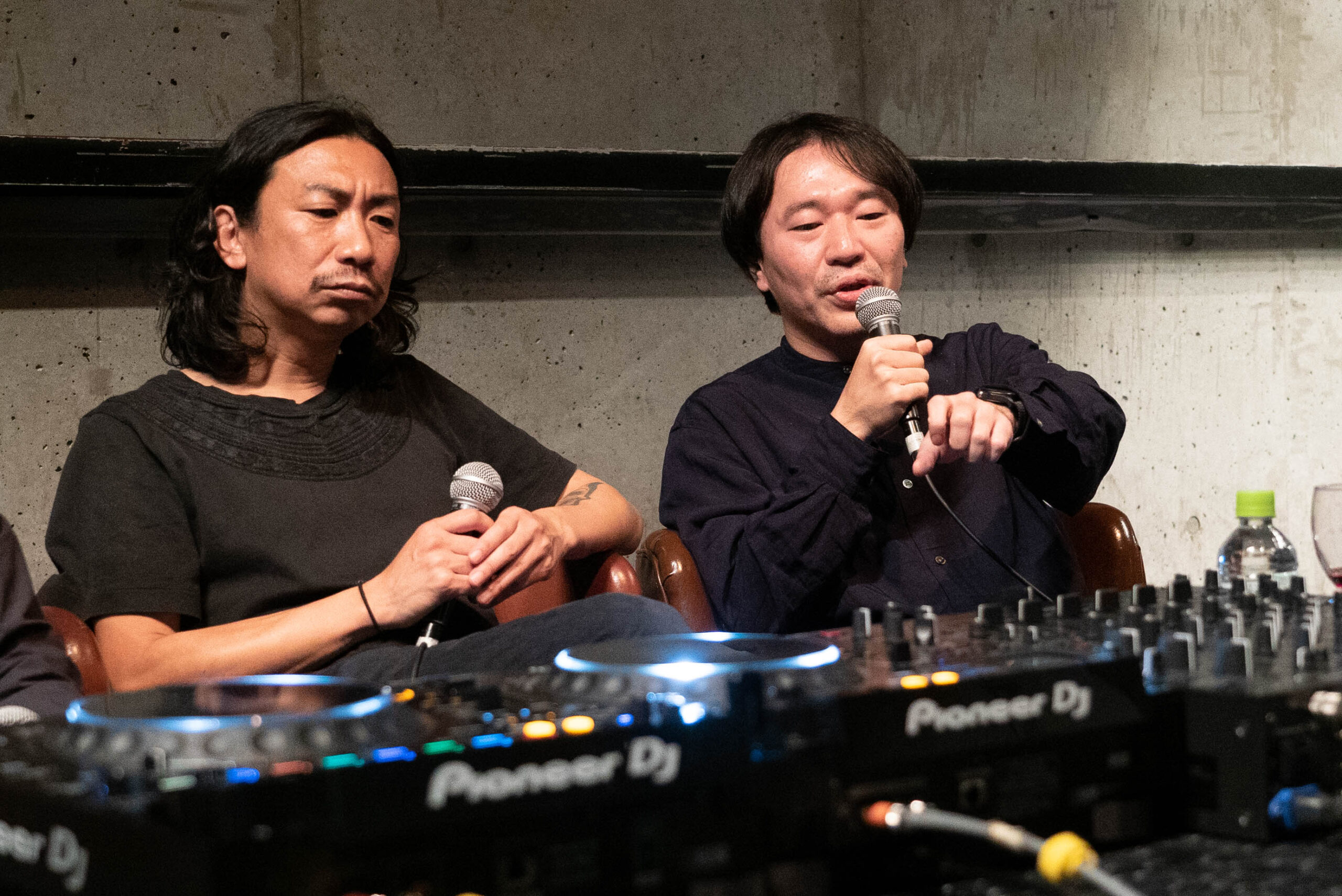
Here you have a new creativity once again. As we’ve briefly gone through CDJ-3000’s evolution, we are coming toward the end of this talk session. Lastly, NOBU and Gonno, do you have any other favorite parts of CDJ-3000 that we haven’t mentioned yet?
Gonno: Besides its functions, I love the way it shows a track artwork in the center of the jog wheel. A track is one piece of art, including its artwork, so it’s nice that you can see a design clearly. For a vinyl, you can see a label whenever you want to know which track it is, but for CDJs there was only written text information before. I couldn’t really bring myself to take a picture, and also it’s difficult to remember a track overnight, but for CDJ-3000 it really feels similar to looking at a vinyl label. It’s remarkable to be able to visually check an artwork, which makes it more fun.
DJ NOBU: Artwork is one thing, and the display on top is also clear and amazing. Including all the other functions, I’m truly thinking: “thank you so much for making such a great equipment”.
Murai: You’re welcome. It’s always our pleasure if you can tell us any suggestions. When we release a new product, we of course try to achieve a top-notch quality, but music instruments are something that never stop evolving. So, we’ll keep making every effort to develop better products that are beyond imagination, while continuously communicating with DJs and artists for ideas that we can never think of only by ourselves. The more we hear real voices for “what you want to do next”, the more pleasure we have for our next project, and our next product.
We truly appreciate your continuous support.
